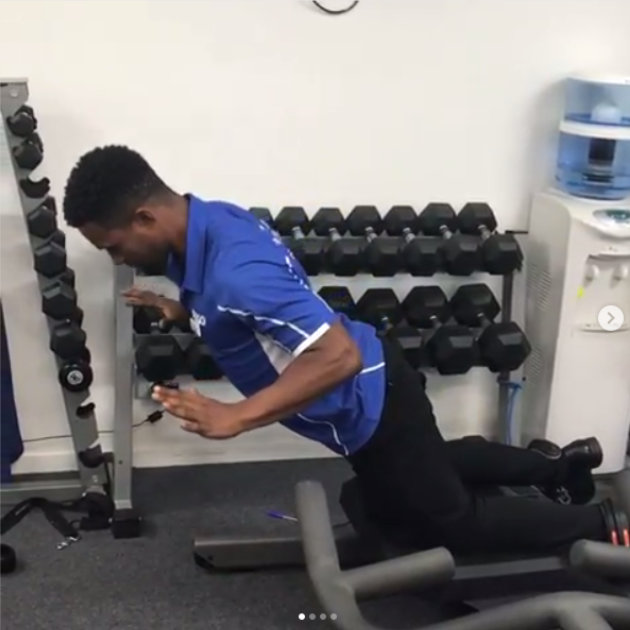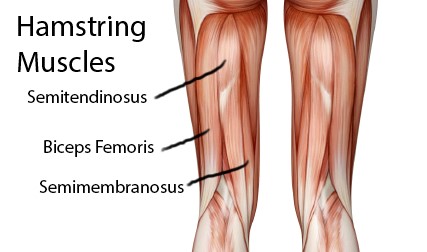Hamstring strength testing: the Nordbord

Short on time? Here’s a few important take-away points from this article:
- The Nordic Hamstring Curl is effective at increasing hamstring muscle strength, size and length.
- Including specific eccentric hamstring strength training in your program can be effective in both reducing hamstring strain injury rates and increasing peak running performance.
- The NordBord is a great tool for measuring hamstring strength of each leg allowing for tracking of overall strength gains and side-to-side imbalances.
- You don’t need a NordBord to get started on strengthening your hamstrings (see the end of this article for some starter exercises).
The NordBord is a hamstring testing system designed by Vald Performance. When used alongside the scorebord app, hamstring strength and the balance of strength between legs can be measured quickly and accurately making it great for assessing individuals and sporting teams. The name is derived from an exercise called the Nordic Hamstring Curl shown below.
The Nordic Hamstring curl has been the exercise of choice when studying the effects of eccentric hamstring strength training and injury prevention. Some of these studies have shown some impressive results in the athlete populations including a reduction of 65% fewer hamstring strain injuries and a greater than six-fold reduction in the rate of injury recurrence (1).

The hamstrings are a group of muscles on the back of your thigh and comprise of 3 separate muscles; the biceps femoris, semimembranosus and semitendinosus.
Together, they play an important role in movement and stabilisation of both the hip and knee. The forces our hamstrings produce increase with our speed of walking, squatting, lunging, running and even decelerating our lower leg with a fast, strong contraction after a powerful movement like a kick. Often our hamstrings help to control movement by contracting forcefully while lengthening. This is known as an eccentric contraction and is an important concept to remember when we think about how best to strengthen the hamstrings to reduce injury rates and improve performance.
The research has not always been in agreeance on the direct relationship between hamstring strength and future injury, however a link has been made between the strength ratio of quadriceps to hamstrings and quadriceps to bodyweight, showing that while there may not be a direct relationship, strength of all lower limb musculature is important to consider in injury reduction in sports involving running & eccentric hamstring contraction (2). Following on from this it is suggested that compound lower limb strengthening exercises have the ability to preferentially increase the strength of the quadriceps over the hamstrings, therefore additional hamstring strengthening within a program can be beneficial (2).
The effectiveness of eccentric training for increased strength and muscle mass is well known (3) and this is where the NorBord comes into its own. By providing a platform to reliably measure hamstring strength and track changes over time, programs and outcomes can be continuously evaluated and modified as required to achieve the best outcomes possible. Not to mention this device makes performing the exercise a much more comfortable endeavour!
Another important feature of the NordBord is that it measures the force produced by the hamstring groups of each leg individually, allowing for side-to-side comparisons. We know post-injury there is a general loss of muscle mass and strength, particularly in areas closely related to that of the injury. This means that clinically, the strength of the hamstring groups on each leg can be assessed and exercise programs be developed to address any identified imbalances. Not only does this help to guide your current rehab journey, but also helps to reduce the chance of you developing future injuries related to a hamstring imbalance.
Another touted benefit of eccentric training is the increase in muscle length due to new units inserted into the muscle fibres, known as sarcomerogenesis, particularly in the long head of the biceps femoris (1:4). This is of great benefit as the biceps femoris is quoted as having a larger than 80% involvement in hamstring tears within sports that involve high running speeds (4).
NordBord’s are generally used by high level sporting teams and clinicians, but you can start working on your hamstring strength at home with a few of the exercises below:
- Single leg Hip Lifts (place your heel on a little block to work the hamstrings even more)
- Fitball hamstring curls
- Hamstring floor slides
Matt Bushell
Exercise Scientist and Physiotherapy Student
References
- Shield, A, Bourne, M (2018). Hamstring injury prevention practices in elite sport: evidence for eccentric strength vs lumbo-pelvic training. Sports Medicine, Vol 48, 3, pg 513-524.
- Cameron, M, Adams, R, Maher, C (2003). Motor control and strength as predictors of hamstring injury ib elite players of Australian football. Physical Therapy in Sport, vol 4, 4, pg 159-166.
- Roig M, O’Brien K, Kirk G, Murray, G, McKinnon, P (2009). The effects of eccentric versus concentric resistance training on muscle strength and mass in healthy adults: a systematic review with meta-analysis. British Journal of Sports Medicine, Vol 43, 8, pg 556–568.
- Bourne, M, Duhig, S, Timmins, R, Williams, G, Morgan, D, Opar, D (2017). Impact of the nordic hamstring and hip extension exercises on hamstring architecture and morphology: implications for injury prevention. The British Journal of Sports Medicine, London, Vol 51, 5, pg 469.








